Have you met... Moiz Zilberman
Have you met... Moiz Zilberman
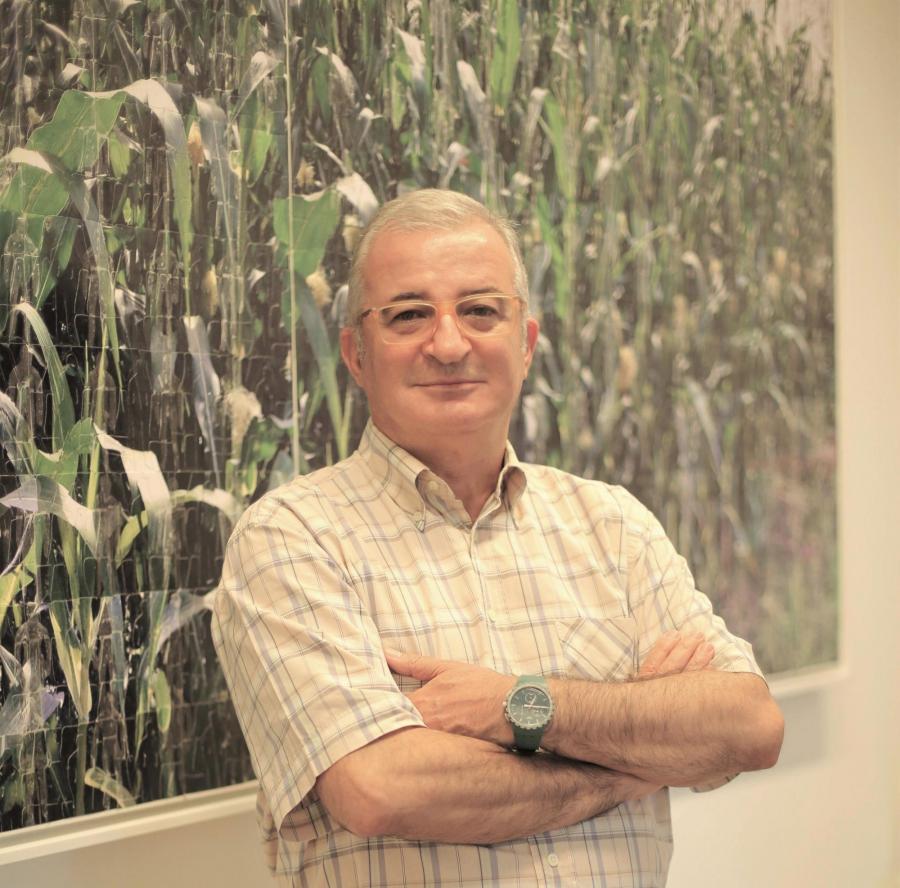
Zilberman Gallery's presence is hardly news to anyone—the Berlin branch of the originally Istanbul-based gallery was warmly welcomed almost two years ago, and has since established itself as an exciting hub for young contemporary art. The gallery's twofold aim – to promote contemporary artists from Turkey internationally and to introduce international artists to the local art scene – is being met with growing success both in Istanbul and in Berlin, thanks to its owner Moiz Zilberman and his team. We reached out to Mr Zilberman to find out what his two galleries and a ten-year-long commitment to the art world represent.
Can you tell us about the very beginnings of your two galleries—when and how did it all start in Istanbul and here in Berlin?
Zilberman Gallery was founded in Istanbul in 2008, with two main aims: to promote contemporary artists from Turkey internationally—including but not limited to the upcoming artists—and to introduce international artists to the local art scene. Zilberman Gallery stages 10-12 exhibitions in a year at its main gallery spaces and the project space. The gallery occupies two separate floors of Mısır Apartment, one of the most famous examples of art nouveau architecture in Istanbul, designed in 1910 by Ottoman Armenian architect Hovsep Aznavur. In 2016, Zilberman Gallery opened its new Berlin space, containing both a gallery and an artist-in-residency program.
Why did you decide to open a branch in Berlin?
In 2016 we opened Zilberman Gallery in Berlin to provide our represented artists more international visibility, to reach to a wider audience and to work with more international artists. The gallery already has a strong presence at international art fairs, forging close relationships with collectors, curators and art professionals, and creating opportunities for our represented artists. Last year, in addition to Contemporary Istanbul and Art Berlin, we also took part in fairs in Hong Kong, Dubai, Vienna, Düsseldorf, Basel, Miami, San Francisco, and three of these participations were in the form of a solo show. In the coming year, we are planning to take part in additional fairs in various locations. To enrich these already established relationships, I believe that we took an important step by opening up a new gallery space and a residency program in Berlin last year. With this new enterprise, our aim was to expand the scope of our activities in Istanbul to one of the most exciting art capitals in Europe. Our artist residency program offered our represented artists the opportunity to live and work in Berlin, thus strengthening the gallery’s activities internationally, increasing its visibility, and developing new relationships with art professionals and various audiences. We are already pleased with the interest from the local audience in Berlin.
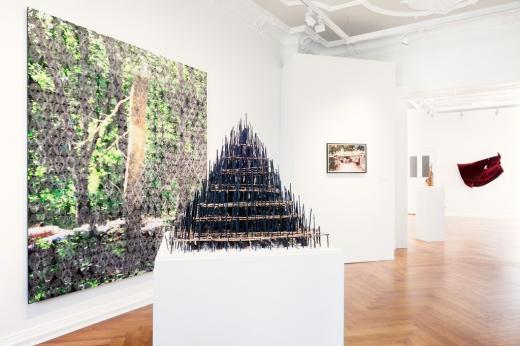
Zilberman Gallery Berlin's inaugural exhibition, "Ultrahabitat", 2016. Photo © Zilberman Gallery
Regarding the location – were you purposely going for Charlottenburg? How is it influencing the gallery's profile?
Zilberman Gallery Berlin is located in a turn-of-the-century building in Berlin's Charlottenburg neighborhood. Originally home to one of the first galleries for modern art, more than hundred years ago, it is today again home to some of the most exciting contemporary art galleries in Berlin, hence, we are very happy about our location.
What similarities / differences do you take in consideration when managing your gallery in Berlin compared to the gallery in Istanbul?
In Berlin, from the very beginning, we have been caring a lot to create a platform for individuals to come together to have conversations, organizing artist talks, lecture performances, and book launches. This is a tendency emerging from our experiences in Turkey. As a result of limited numbers of art institutions and government support in Turkey, we have a different model and sometimes challenging to be understood by international members of art community. Art galleries are not only spaces for profit, but most of the times they have to act as non-profit art institutions, providing artists a space to share their works with the audience and creating free platforms for discussions. In this manner, we have always been aware of our social responsibilities. It's important for us to provide opportunities for emerging artists to present their works through our non-profit exhibition projects at our project space in Istanbul, and the annually-held "Young Fresh Different" show, the eighth of which took place last year. We're also happy to have hosted seven artists in Berlin—Zeynep Kayan, Memed Erdener, Antonio Cosentino to name a few—in the frame of our artist residency program, which we think has helped them establish strong relationships with the local art community, and advance their careers. The catalogues we have been publishing for each exhibition by inviting renowned scholars, writers, critics and curators and the artistic research grant, Zed Grant are all parts of this responsibility.
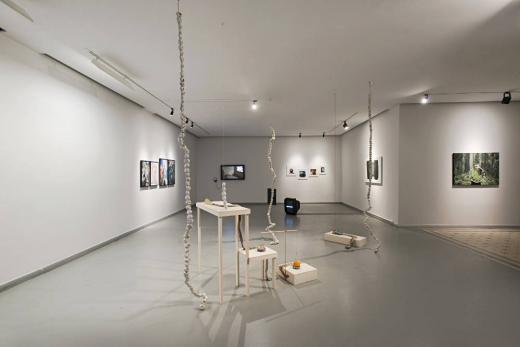
"Young Fresh Different VIII" at Zilberman Gallery Istanbul, 2017. Photo © Zilberman Gallery
What is the curatorial approach you take with the exhibition program in Berlin?
Regarding the programming, Zilberman Gallery Berlin’s activities partially overlap with Istanbul but also present more works by German and European artists, in addition to artists from Turkey and MENA with a focus on keeping the main line of Zilberman Gallery as it is. Each exhibition is well thought in terms of context by either curator Naz Cuguoglu or Dr. Lotte Laub. In addition to that, from time to time we invite curators such as René Block for the exhibition "Sympathie". Almost like a museum we give importance to the curatorial process and archive. Our catalogues are a good example of this; we give importance to creating a discourse with the texts and artist talks.
How do you choose the artists you work with?
I am very interested in artworks that have a socio-political perspective. For me, art is a way to protest and to criticize. However, I prefer to call the line of the gallery as “critical”, including but not limited to socio-political art works. This sensitivity guides us when we choose the artists to represent.
Can you tell us more about your residency program?
The artist-in-residence program invites the artists that gallery represents and collaborates with to live, work, and make research in an international and dynamic environment. This program is pursued at the same building where Zilberman Gallery Berlin is located. In Berlin’s thrilling atmosphere, artists have the opportunity to pursue their works in an inspiring artistic environment. For two months, this program provides the artists with accommodation, studio and per diem. At the end of each residency period, we organize open studios—by considering the artist’s will, of course.
How do you see your Berlin gallery developing?
I am very happy about the interest from the local art scene, supported with increasing number of visits to our exhibitions and events, and press coverage. Despite the fact that our Berlin gallery is quite new in Berlin, we’re excited about the increasing followers and our main aim is to keep connected with our visitors in the upcoming seasons.
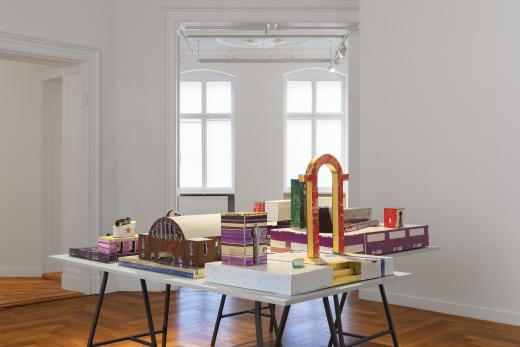
Antonio Cosentino, “Summer was a Beautiful Day” @ Zilberman Gallery Berlin, 2018. Photo © CHROMA
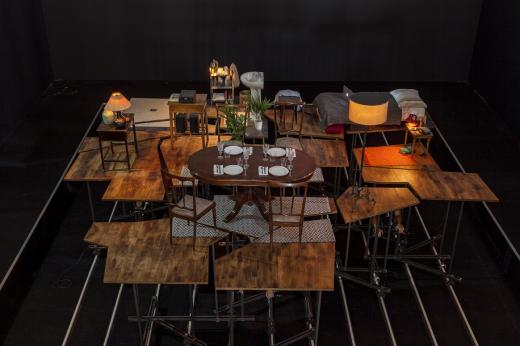
Pedro Gomez-Egana, "The Domain of Things" @ Istanbul Biennale, 2017. Photo © Sahir Ugur Eren
What is coming up next at Zilberman Gallery Berlin?
We are presenting Istanbul-based artist Antonio Cosentino’s show “Summer was a Beautiful Day” until April 14. The show is based on a speculative fiction story written by the artist. Infuenced by the history of Berlin as a divided city, the artist imagines a wall erected in one night in the city of Istanbul. Maps, urban models and small objects such as tin toys, soda bottle caps, albums that Cosentino collected during his residency at Zilberman Gallery Berlin’s artist-in-residence program in the summer of 2017, become the tools of storytelling for the narrator-protagonist. Next exhibition is Pedro Gómez-Egaña’s solo show “The Common Ancestor” between the dates of April 26 – July 31, 2018. Columbian-born, Copenhagen- and Bergen-based artist’s works deal with current and historical technologies and explore how they define our experience and understanding of time. Besides installations, video works and sculptures, Gómez-Egaña has also gave lecture performances in institutions and festivals such as MOMA PS1 or Performa, NY.
* * * * *
Zilberman Gallery Berlin
Goethestr. 82, 10623 Berlin
More info
Ongoing:
Antonio Consentino, "Summer was a Beautiful Day"
February 9 – April 14, 2018
More info
Upcoming:
Pedro Gómez-Egaña, "The Common Ancestor"
April 26 – July 31, 2018